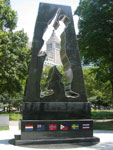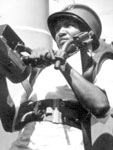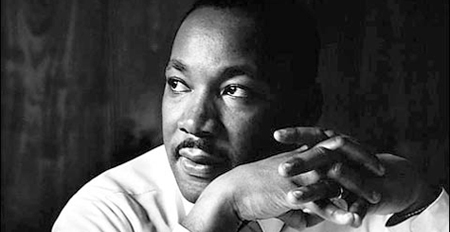Jewish Holy Days
Martha Katz-Hyman discusses the arrival of Jews in early colonial America, their reception in the colonies, and the ways in which they observed their religion and its celebrations.
Martha Katz-Hyman discusses the arrival of Jews in early colonial America, their reception in the colonies, and the ways in which they observed their religion and its celebrations.
Colonial Williamsburg historian Lou Powers discusses the holiday season as it existed in the colonial era, as well as touching on calendar systems and class divisions.
Video background from The Library of Congress Webcasts site:
"Decoration Day is a late spring or summer tradition that involves cleaning community cemeteries, decorating them with flowers, holding religious services in cemeteries, and having dinner on the ground. These commemorations seem to predate the post-Civil-War celebrations that ultimately gave us our national Memorial Day. Little has been written about this tradition, but it is still practiced widely throughout the Upland South, from North Carolina to the Ozarks and beyond."



Veterans Day approaches! Last year, Teachinghistory.org introduced you to resources for collecting oral histories from veterans. Most of these resources still hold good—if you're interested in inviting a veteran into your classroom or leading your class in an oral history project, try History.com's Take a Veteran to School Day or the Library of Congress's Veterans History Project.
But what if you don't have the time or resources to arrange a speaker or manage oral history collection? What if your students are too young to appreciate a veteran's stories and their context? How can you honor the holiday and draw your students in?
How about teaching with monuments and memorials?

Everyone knows the Vietnam Veterans National Memorial, with its simple, iconic design, preserving the names of servicemen killed or missing in action. But what about the additions to the memorial? What prompted the creation of the two figural statues, The Three Servicemen and the Vietnam Women's Memorial? If you are far from Washington, D.C., your students can examine photographs (try Flickr Creative Commons for copyright-free images of many major memorials), read about the history of memorials, and draw their own conclusions.
What needs do the different pieces of the memorial fill? What do they say about Vietnam and its veterans? Who designed them? Who chose these designers? Where did the money to build them come from? When were they unveiled? What controversies have surrounded their design? Are there any special observances at these memorials on Veterans Day?
You could also look up other major DC memorials, built to remember very different wars and participants. Try the African American Civil War Memorial, District of Columbia War Memorial, Korean War Veterans Memorial, National Japanese American Memorial to Patriotism During World War II, or the National World War II Memorial.

Or perhaps you'd like to engage students with material closer to home. Look around your town. Ask at your local historical society. What monuments and memorials does your area have? A memorial for the Civil War? Korean War? Vietnam War? World War II? When were these built? Why might your area have memorials for some wars but not others? Who maintains them? What do area residents think of them? How do they resemble or differ from other memorials to veterans from the same war? How and where is Veterans Day memorialized in your town? Are there any observations at these memorials?
High-school teacher James A. Percoco shares his own experience engaging students with memorials in this video, while 8th-grade teacher Amy Trenkle demonstrates teaching with monuments and memorials in action, in our blog, as she takes her class to visit the Columbus Memorial Fountain in Washington, D.C.
If you can't arrange a field trip to a memorial, but would still like to have students visit and analyze one, try designing an individual field trip (IFT) for students. James A. Percoco tells you how.
Still at a loss for resources? Search our Website Reviews for online exhibits and archives full of primary sources, or our Museums & Historic Sites database for sites in your area.


It's February! Resources throughout the web stand ready to provide you with lessons and primary source materials for Black History Month (also known as African American History Month), but African American history stretches far beyond the confines of one month and the narrative litany of a handful of cultural heroes. Maybe you want to go beyond Martin Luther King, Jr., Frederick Douglass, and Jackie Robinson. What stories can you uncover beyond the headlining stories textbooks provide? Remind your students of the complexity of African American history with these resources.
 If none of these resources fit into your curriculum or spark your interests, there's plenty where they came from. Search our Website Reviews using the topic "African Americans," and you'll turn up close to 300 websites, on topics ranging from Marcus Garvey to the construction of race to Seattle's Black Panthers to sheet music by and about African Americans. Or test your African American history knowledge in our weekly quiz feature! You and your students can take online quizzes on African American baseball players and other athletes, the historical accuracy of the film Glory, Jim Crow laws, and foodways.
If none of these resources fit into your curriculum or spark your interests, there's plenty where they came from. Search our Website Reviews using the topic "African Americans," and you'll turn up close to 300 websites, on topics ranging from Marcus Garvey to the construction of race to Seattle's Black Panthers to sheet music by and about African Americans. Or test your African American history knowledge in our weekly quiz feature! You and your students can take online quizzes on African American baseball players and other athletes, the historical accuracy of the film Glory, Jim Crow laws, and foodways.
You can also explore the African American History Month pages of history and educational organizations, including:

Martin Luther King, Jr. is the only American with a unique, individual holiday—not even American presidents are so remembered anymore. It's observed on the third Monday in January—January 18 this year—and the path to creating this holiday was uphill. Corretta Scott King (1927-2006) considered the day as one of interracial and intercultural cooperation and sharing. "Whether you are African-American, Hispanic or Native American, whether you are Caucasian or Asian-American, you are part of the great dream Martin Luther King, Jr. had for America," she wrote.
Since 1994, it's also been a Day of Service, "a day ON, not a day off," when people are encouraged to come together with volunteer projects to move us closer to achieving the dream Dr. King had for the nation. Dr. King once said that what we all have to decide is whether we "will walk in the light of creative altruism or the darkness of destructive selfishness. Life's most persistent and nagging question is 'what are you doing for others?'"
Communities throughout the country offer opportunities for volunteers—use the searchbox at Serve.gov to find programs near you—or consider planning ahead with your students to develop a school-based day of service for 2011.
Few commemorations of the Civil Rights leader will occur without citing King's moving and powerful I Have a Dream speech at the Lincoln Memorial in Washington, DC, August 28, 1963. Few will fail to ask whether we have moved closer to achieving his dream that America is living out the "true meaning of its creed: 'We hold these truths to be self-evident, that all men are created equal.'"
It was a question Martin Luther King later asked in the sermon, "Unfulfilled Dreams," delivered at Ebeneezer Baptist Church on March 3, 1968 less than a month before his assassination. "I guess one of the great agonies of life is that we are constantly trying to finish that which is unfinishable," he stated and he talked about Mahatma Gandhi, Woodrow Wilson, and various Biblical figures who died before seeing the fruition of their lifework.
The creators of Teach Martin Luther King, Jr. of the Western Michigan University MLK Celebration Committee believe that students K-12 are able to tackle this question and offer teaching ideas and resources grouped for elementary, middle and high school students. Materials encourage educators to move beyond textbook biographies to "...the years following 1963...years of tremendous growth and deepened insight. King was uncompromising in his stand against racism in the United States."
The site provokes discussion through introducing (and dispelling) four myths about Dr. King, including, "Martin Luther King, Jr. should be thought of as a great African American leader." "Compared to Malcolm X, Martin Luther King, Jr. was an "Uncle Tom;" rather than using "any means necessary" he believed in a passive non-violence." "Now that we are in the twenty-first century we have achieved the goals King fought for?" The phrasing of the myths is intended to jar; the commentary does not, but emphasizes the scope of Dr. King's work, placing his life in a global context of meaning and achievement.
Audiovisual resources posted on the site (and linked through YouTube) include "I Have a Dream," other speeches, and videos of historical commentary.
For materials that help relate Dr. King's work to the present day, explore a 2008 speech by then-presidential candidate Barack Obama at Ebeneezer Baptist Church. The half-hour video recaps the civil rights movement, Dr. King's life and impact, and present-day concerns.
And for comprehensive access to primary sources, white papers, and teaching materials, Martin Luther King, Jr. Research and Education Institute at Stanford University hosts the King Papers Project. As you might expect, a plethora of materials on King, his life, his speeches, and his work are accessible under this umbrella. Classroom Resources include document-based lesson plans, biographical essays, and an online encyclopedia of the civil rights movement.
Congressman Conyers leads a discussion of the legislative history of efforts to establish a federal holiday in honor of Dr. Martin Luther King Jr. and the continuing significance of the Reverend Dr. King's life. The Congressional Black Caucus and its co-founder Rep. Conyers were leaders in that effort. After their presentations, the panelists responds to audience members' questions.
In November 1983, President Ronald Reagan signed into law legislation declaring the third Monday in January as the Martin Luther King, Jr. Federal Holiday, to celebrate the birthday and life of the slain civil rights leader. It had been 15 years since Dr. King's assassination.
This short video from The History Channel website offers an overview of how Thanksgiving came to be enshrined in America's national calendar. According to the website, "Early Puritans observed Thanksgiving days of prayer, but Sarah Josepha Hale's crusade for a national day of thanks is what ultimately gave us Thanksgiving."
This short video from The History Channel website offers an overview of how Thanksgiving came to be enshrined in America's national calendar. According to the website, "Although Thanksgiving celebrations dated back to the first European settlements in America, it was not until the 1860s that Abraham Lincoln declared the last Thursday of November to be a national holiday."
The Macy's Thanksgiving Day Parade is a staple of modern Thanksgiving celebrations. However, did you know the first Macy's parade occurred around the Christmas season? This short video from The History Channel website analyzes the transformation of the original 1924 parade into an annual national phenomenon.